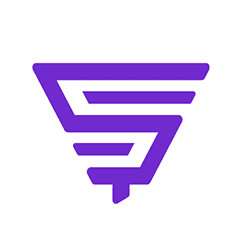HR departments use people analytics software to help gauge and assess the efficacy of processes and departmental KPIs. That same software helps organizations overcome recruiting, hiring and retention challenges. The question is, why does it matter, and what can HR analytics do for you?
What are HR analytics and why should I care?
Integral to informed decision-making, HR analytics capture and measure how an HR team functions, analyzing KPIs (Key Performance Indicators) like employee turnover and time to hire concrete data an HR team can be held accountable for.
When properly implemented, organizations can see the results of their business strategies. HR analytics also help clarify organizational procedures, optimize resources, and improve the employee experience.
How does HR analytics help your business?
A common pain point among clients is the ability to see talent acquisition performance throughout the entire candidate cycle.
HR analytics can be a game-changer when adequately employed, lending visibility to your efforts by tracking and measuring all HR initiatives and goals. The tracking of KPIs can include everything from turnover rates to employee retention and the cost of benefits versus the utilization of benefits.
Symphony Talent can measure, analyze and predict throughout the entire lifecycle. Using our analytics platform, clients can gain insight into the holistic process, from the candidate's first impression to the hiring stage and beyond. That includes:
- Best performing media sources by location, job categories, and job titles
- Forecast for Media cost per hire and cost per apply by location, job categories, and job titles
- The best source of hires and applies using First Touch, Last Touch, and Frequent Touch attribution models by location, job categories, and job titles
- Time to close, time to hire, application count, time in workflow by, location, job categories and job titles
- Quarterly Business reports are provided that cover metrics and recommendations that are relevant to the customer. This is a standard offering
- Custom reports are provided wherever required as a premium offering
- Engagement Score that provides the probability of a person applying or hire into a job or pipeline
Of course, it doesn't stop there. We deliver prescriptive guidance via our SFX offering. That knowledge can be used to:
- Automatically level the jobs that are sent to media based on current performance and future forecast
- Automatically adjust campaigns
- Automatically change sites based on performance and forecast
- Prescribe which candidates will be a fit for a job and recommend specific jobs to candidates
What's new and trending in HR analytics?
The pandemic changed the nature of work for employees nationwide. Human resources professionals and business owners have faced growing challenges in the current labor environment.
In an era where technology dominates the professional landscape, HR professionals and business owners must collect information on the needs of their employees so they can analyze that and utilize tools that best deliver on promises.
HR analytics can help you optimize experience, growth mindset and culture when hiring, or how well the worker aligns with your company's mission and values.
It can measure your workforce, too, so you know your highest earners are also your top performers, and you're spending your investment wisely. That includes collecting data on salaries, performance reviews, and promotions.
That same software can also help improve the employee experience at every touchpoint, a crucial component of overall employee satisfaction. That includes everything from recruiting to onboarding, managing, annual reviews and even their departures.
How does HR analytics help with employee retention?
Organizations can keep staff on track with established goals by collecting and comparing numbers to evaluate KPIs. Meanwhile, HR professionals can analyze the effectiveness of employee learning and training programs integral information that helps them know what's working, what needs adjusting, and what doesn't work. And you don't have to wait for annual employee surveys real-time data lets you be more agile as an organization regarding employee engagement.
People analytics can help organizations understand and optimize their workforce to align with business objectives and investments. The reality is skills are today's currency, and investing in the acquisition and retention of top talent can help establish succession plans; plan attractive compensation and benefits; enlist training to upskill employees; and know what roles are relevant to achieving business goals so you can remobilize and reallocate your existing staff.|
How does HR analytics help with diversity hiring?
People analytics help keep your organization's diversity hiring goals on track by helping to establish metrics that show the progress or a lack of progress when it comes to diverse hires from the available applicant pool, representation in leadership, the departure of employees, compensation and internal mobility.
However, it's important to note that change doesn't happen overnight. So, leaders need to assess data and potentially adjust efforts on an ongoing basis to see measurable growth in diversity hiring.


